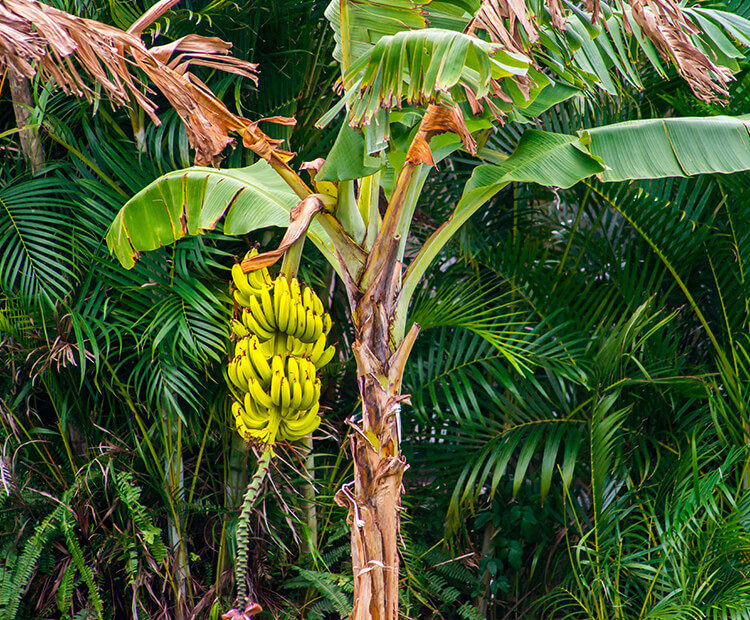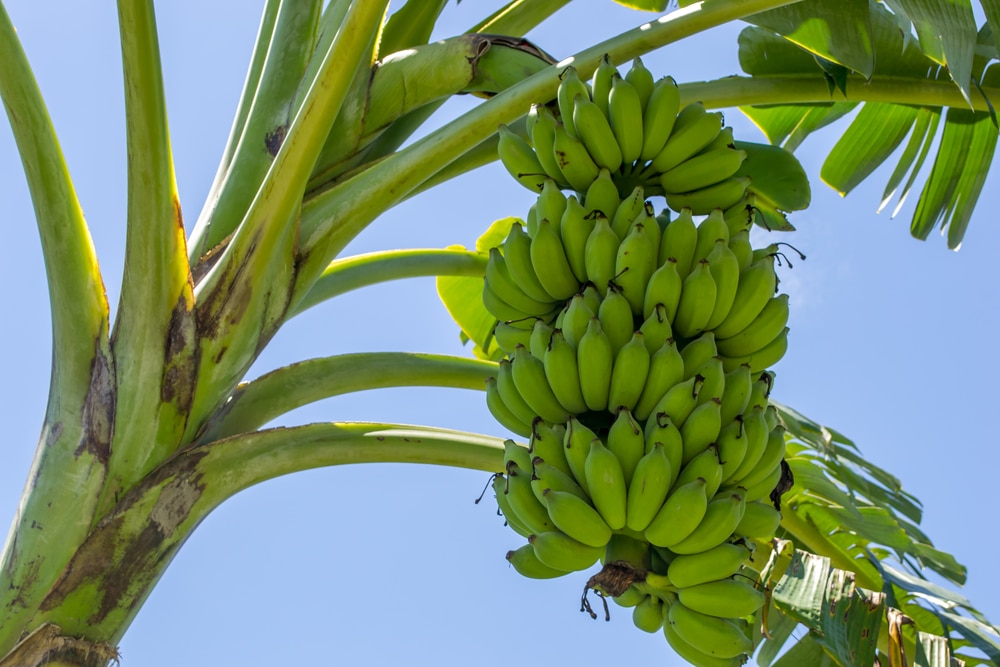html Bananas on Trees?! The SHOCKING Truth You NEED to Know! Bananas on Trees?! The SHOCKING Truth You NEED to Know! (Do Bananas Grow on Trees?) The question "Do bananas grow on trees?" might seem simple, but the answer is surprisingly nuanced. Many people picture bananas hanging from a classic tree, but the botanical reality is far more fascinating. This article dives into the world of banana plants, debunking common misconceptions and providing a comprehensive understanding of how these beloved fruits are cultivated. Prepare to be surprised by the truth about where your bananas truly come from! The Banana Plant: Not a Tree, But Something Else Entirely The biggest misconception is that banana plants are trees. In reality, they are giant herbs. Think of it like this: a tree has a woody trunk that persists year after year. Banana plants, however, have a structure called a pseudostem. This "false stem" is made up of tightly packed leaf sheaths that unfurl to create the plant's impressive height. This difference is crucial to understanding the plant's growth and life cycle. Understanding the Pseudostem The pseudostem is the heart of the banana plant. It's the primary support structure and the source of the plant's nutrients. The pseudostem grows from an underground structure called a rhizome. Think of the rhizome as the plant's root system and the source of new plants (more on that later). The leaves emerge from the top of the pseudostem, unfurling one by one to create the plant's iconic appearance. Key takeaway: The pseudostem is the key to the banana plant’s unique structure and distinguishes it from true trees. How Bananas Grow: From Flower to Fruit The banana fruit's development is a fascinating process. Here's a simplified breakdown: The Flower Emerges: When the banana plant reaches maturity (typically 9-12 months), a large flower stalk emerges from the top of the pseudostem. This stalk is initially covered by bracts, which look like large, colorful leaves. The Banana "Hands" Develop: As the flower stalk unfurls, clusters of flowers, called "hands," begin to appear. Each "hand" contains several individual bananas, or "fingers." Pollination (and Lack Thereof): Most commercial banana varieties are seedless and therefore don't require pollination. The bananas develop through parthenocarpy, meaning the fruit develops without fertilization. The Fruit Ripens: The bananas grow and ripen over several months, gradually increasing in size and sweetness. The color changes from green to yellow (or red, depending on the variety) as the fruit ripens. Harvest: Bananas are typically harvested while still green and unripe to prevent spoilage during transportation. This detailed process illustrates that bananas don't grow like other tree fruits. They develop in clusters from a single flowering stalk, a process far different from the growth of apples or oranges. Banana Cultivation: A Global Industry Banana cultivation is a significant global industry. The majority of bananas consumed worldwide are of the Cavendish variety. These bananas are grown in tropical regions around the world, with major producers including India, the Philippines, Ecuador, and Indonesia. [Link to a reputable source about banana production statistics, e.g., FAOSTAT]. The Challenges of Banana Farming Banana farming faces several challenges, including: Disease: Diseases like Panama disease (caused by the fungus *Fusarium oxysporum f. sp. cubense*) and Black Sigatoka (caused by the fungus *Mycosphaerella fijiensis*) can devastate banana crops. [Link to a reputable source about banana diseases, e.g., a university agricultural extension website]. Pests: Pests like the banana weevil and nematodes can damage the plants and reduce yields. Climate Change: Changing weather patterns and extreme events can disrupt banana production. Sustainability: The use of pesticides and fertilizers in banana farming can have environmental impacts. Sustainable farming practices are becoming increasingly important. The Future of Bananas The banana industry is constantly evolving. Researchers are working to develop disease-resistant varieties and improve farming practices to ensure the long-term sustainability of banana production. Genetic modification and other innovative approaches are also being explored to combat disease and improve yields. Interesting Fact: The Gros Michel banana, once the dominant commercial variety, was wiped out by Panama disease. This highlights the vulnerability of monoculture and the importance of diversity in agriculture. Conclusion: The Truth About Bananas and Trees So, do bananas grow on trees? The answer is a resounding no. They grow on giant herbs called banana plants, which are characterized by their unique pseudostems. Understanding the biology of the banana plant, from its underground rhizome to its fruit-bearing pseudostem, provides a deeper appreciation for this globally popular fruit. The banana industry faces various challenges, but ongoing research and sustainable practices are paving the way for a more resilient and environmentally friendly future for banana production. Now, the next time you reach for a banana, you'll know the fascinating story behind it! Want to learn more about other fascinating plants? [Internal link to other articles on your website about plants.]
Bananas On Trees?! The Shocking Truth You Need To Know! (Do Bananas Grow On Trees?)
```html Bananas on Trees?! The SHOCKING Truth You NEED to Know! Bananas on Trees?! The SHOCKING Truth You NEED to Know! (Do Bananas Grow on...




